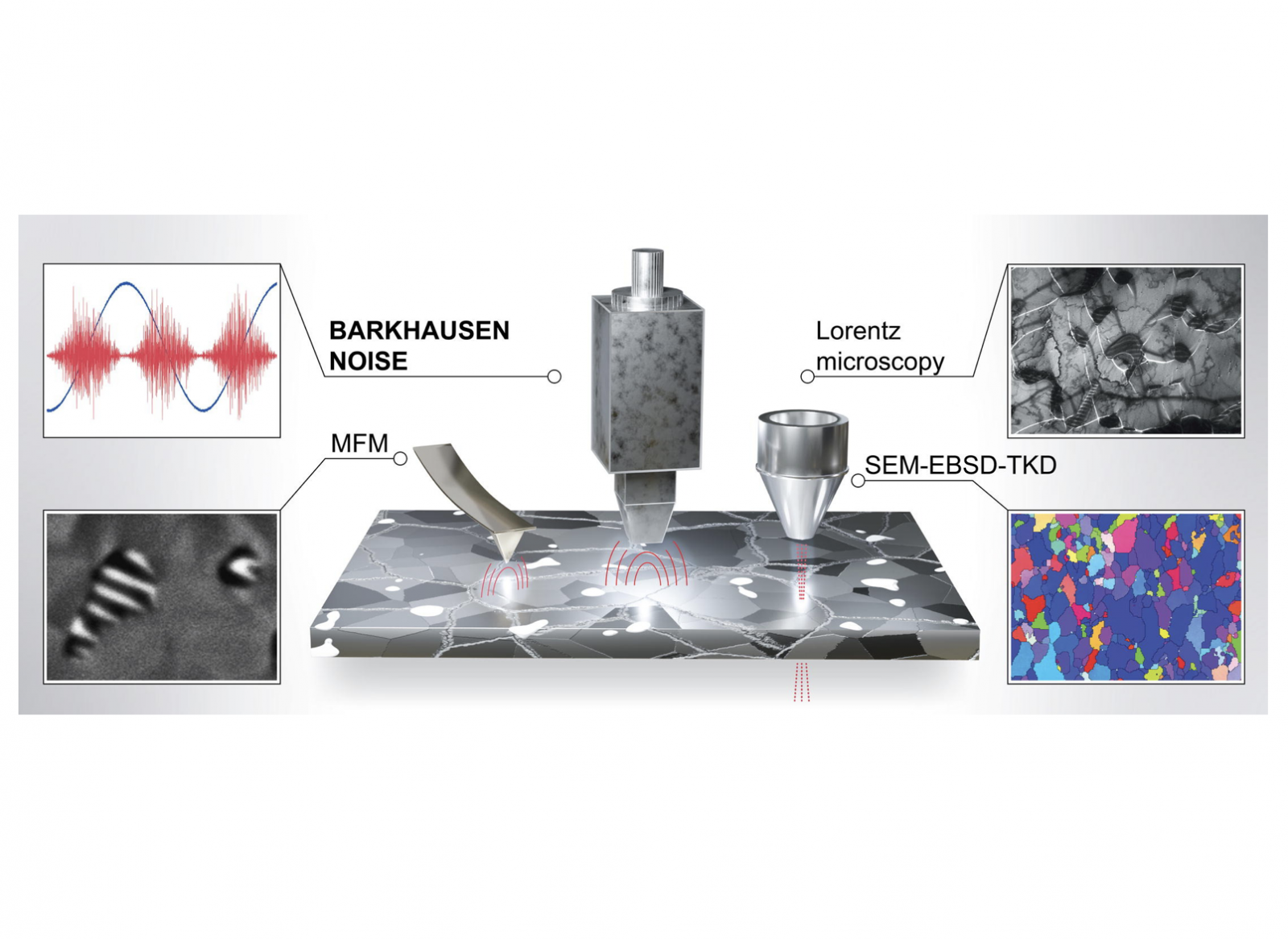Abstract: Two steels, ferrite and ferrite-pearlite were thoroughly characterized by a multi-instrumental microscopy techniques to get detailed information about their microstructure and magnetic structure. Microstructural features act as pinning sites for the motion of magnetic domain walls (DWs) leading to changes in the magnetization of the sample. This phenomenon is the basis for industrially relevant non-destructive Barkhausen noise (BN) technique. With magnetic force microscopy (MFM), using bulk samples, and Lorentz microscopy, using thin films, we noticed that bulk and thin samples have similar domain structure still giving different BN signal amplitudes. We could explain an in-plane DW movement under out-of-plane applied magnetic field using anisotropy energetics. In-situ transmission electron microscopy (TEM) in Lorentz mode was used to visualize the motion of DWs and their interactions with different pinning sites. To help the interpretation of DW motions, alignment and denoising processes were tailored for in-situ TEM studies. Multi-instrumental and multidimensional structural analysis enabled us to visualize and verify many theoretical hypotheses related to the origin of BN signal in ferrite and ferrite-pearlite steels.
This is the latest outcome of the BarFume project funded by the Research Council of Finland. Congrats to everyone involved! The paper is available here:

